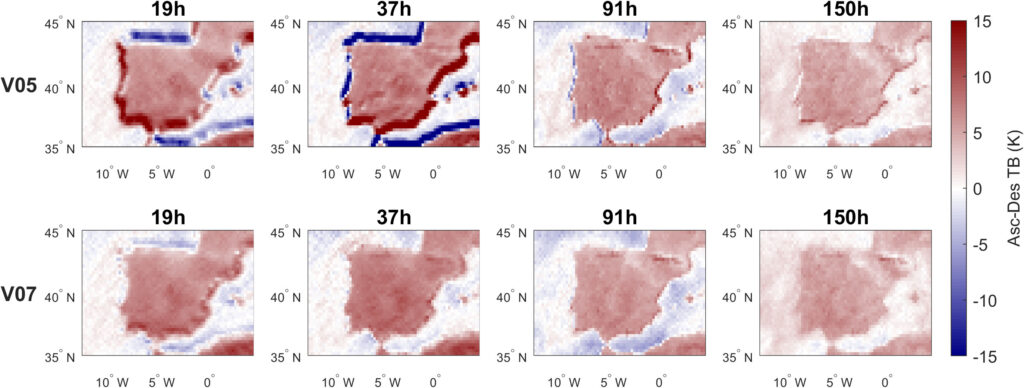
A new article in IEEE Transactions on Geoscience and Remote Sensing details the new updates to the special sensor microwave imager/sounder for the Global Precipitation Measurement (GPM) Version 7 Data Suite. Rachael Kroodsma, ESSIC/CISESS Assistant Research Scientist, was first author on the paper.
Observations from the Special Sensor Microwave Imager/Sounder (SSMIS) onboard the Defense Meteorological Satellite Program F16, F17, F18, and F19 spacecrafts provide a significant portion of the microwave radiometer data within the GPM mission constellation. In preparation for the V07 data release, SSMIS corrections developed over a decade ago and incorporated in GPM Version 5 have been reexamined and updated.
The calibration updates include pointing parameters affecting geolocation and viewing geometry, along-scan bias adjustments to account for scan edge falloffs, and sun angle corrections to account for heating anomalies including an emissive reflector. To address errors in the V05 geolocation, the sensor roll, pitch, yaw, half cone angle, and timing offsets have been reanalyzed and updated. The along-scan bias adjustment is updated in a manner consistent with recent Special Sensor Microwave Imager updates to account for variations in scene temperature. Finally, significant improvements to the SSMIS sun angle correction are made by using data from the entire mission, extending the corrections to include the higher frequency channels, and deriving a more consistent channel-to-channel correction.
The result of these updates is a significant improvement in the quality and long-term consistency of the SSMIS data that are included in the GPM V07 dataset.
Kroodsma works with the Precipitation Processing System at the NASA Goddard Space Flight Center. Her research interests include microwave radiometer calibration and remote sensing of the atmosphere. As a member of the Global Precipitation Measurement (GPM) inter-calibration working group (XCAL), she works on developing inter-calibration techniques and monitoring the calibration of the microwave radiometers in the GPM constellation. She is also the instrument scientist for the Conical Scanning Millimeter-wave Imaging Radiometer (CoSMIR), which most recently flew on NASA’s ER-2 aircraft in the IMPACTS field campaign.
To access the article, click here: “Special Sensor Microwave Imager/Sounder Updates for the Global Precipitation Measurement V07 Data Suite”.






